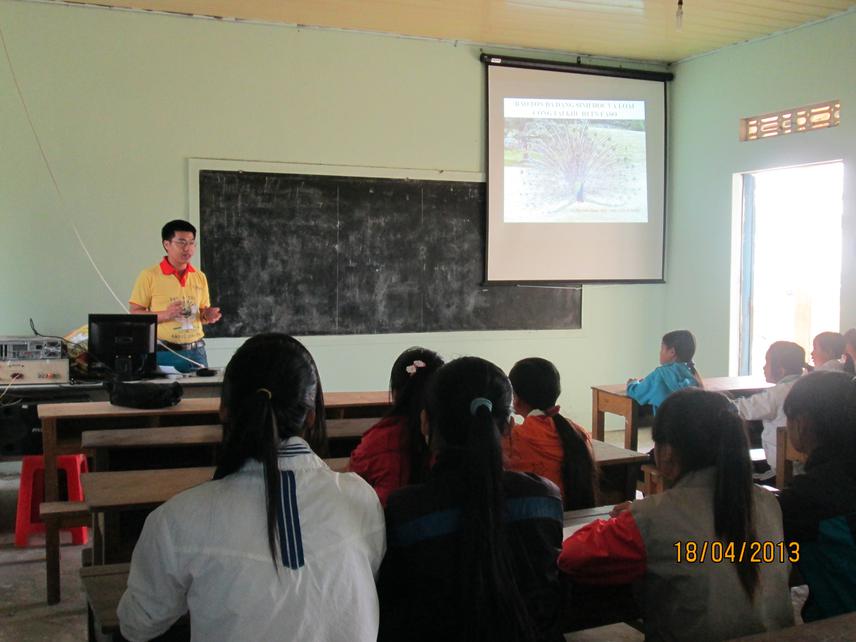The aim of the project is to provide information on the status of Green Peafowl populations in the Bu Gia Map National Park and enhancing the conservation efforts for saving this endangered species.
Green Peafowl is the galliform species at most immediate risk in Indochina (Brickle et al. 2008). Populations of this species have dramatically declined, or even disappeared, in most of its historical distribution range in past decades, mainly due to habitat loss and hunting. The species is listed as “Endangered” by IUCN (2011). However, the total population size and distribution of Green Peafowl in Vietnam is not known.

Raising awareness for conservation at school.
Bu Gia Map National Park (BGMNP) is located in southern Vietnam, covering an area of 26,032 ha. BGMNP is one of a few sites still supporting a population of Green Peafowl in Vietnam (Birdlife International and FIPI 2001). Recently, Green Peafowl have been encountered in the park (Tuan 2011 pers. com.). However, there has been no intensive survey, monitoring programs, or conservation actions for this species in the park.
Methods for surveying and monitoring Green Peafowl are not firmly established. Previous surveys usually estimated Green Peafowl density and population size under the assumption that all individuals in the surveyed areas were detected. However, individual males do not call every day (Indrawan 1995). Therefore, through the project, we would like to make contributions to establishing standard methods for Green Peafowl surveys and monitoring.
A standardized point count method will be used to detect the presence of Green Peafowl calls during the breeding season. Survey will be conducted in early morning and late afternoon. We will use the method provided by Vu Tien Thinh and Rawson (2011) that has been successfully applied in gibbon surveys. Daily calling probabilities will be estimated and then used to adjust density and population size estimated from raw data.
The project outcomes will includes:
(1) up-to-date information on the status of the species within the protected area,
(2) the species distribution map,
(3) An action plan for this species in BGMNP. Additionally, through the project, we will raise the awareness for conservation among local communities and enhance the skills in biodiversity surveys and conservation activities for protected area staff.